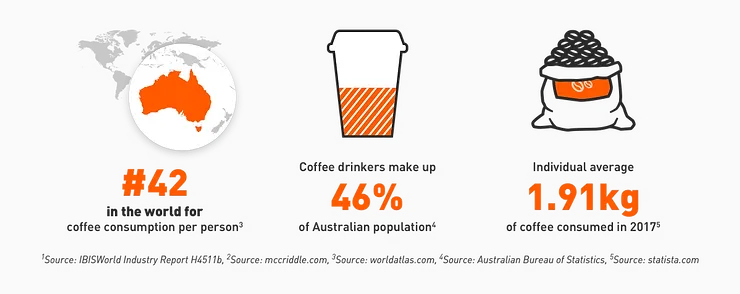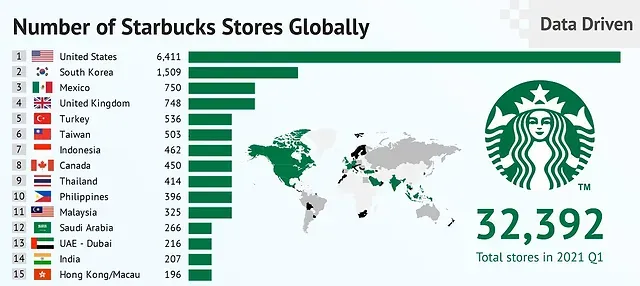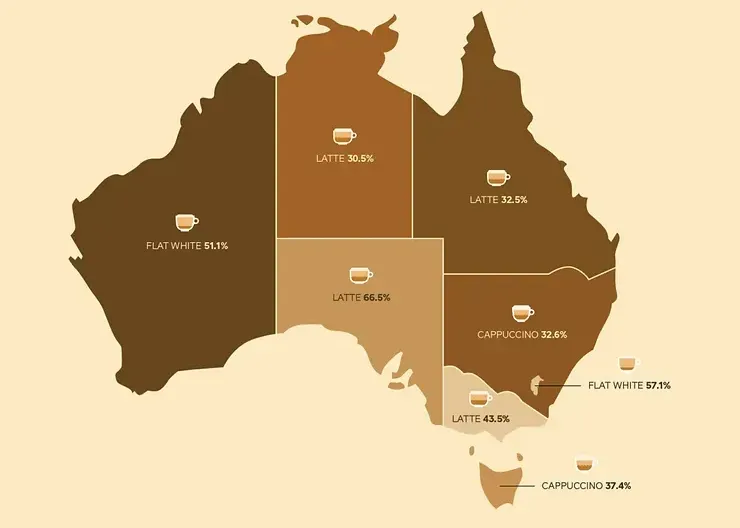How Starbucks FAILED in Australia: The $105 Million Loss Bet
Australians are spoiled for choice when it comes to coffee. After World War 2, Italian and Greek immigrants brought Coffee Culture to Australia
The Starbucks Empire
Since its conception in 1971 in Pike Place Market Seattle, Starbucks has seen great success convincing students and office workers worldwide that they need coffee in their daily routine. Their international reputation grew exponentially into an empire of over 30,000 stores.
In 1999, Starbucks first entered Mainland China in Beijing. Now, there are 4100 Starbucks coffee shops all over China, a country which is famous for drinking tea. On the other hand, Singapore, a country that is even smaller than Hong Kong, has 124 Starbucks coffee shops.
The company thrived in these countries being accustomed to their local culture. They create a greate appeal in Eastern Cultures by providing tea items on the menu while branding themselves with a higher status. The expansion of Starbucks into China and Singapore are therefore cases of successful cultural export, which is the transmission of a country’s unique values and customs. However, one country stood firm against the Starbucks invasion: Australia.
The Fallen Empire in Australia
Starbucks aimed to export the American coffee-drinking culture to Australia when it entered the market for the first time in 2000. By failing to recognize the prevailing trends in the Australian market, within eight years of operation, Starbucks needed to close 61 of its 87 stores, and a total of $105 million incurred losses. Currently, there are only 51 Starbucks stores in Australia, all located in the Southeastern part.
But why did Starbucks fail so severely in culturally exporting American Coffee into Australia? It is worthwhile to look at the history of Australian coffee first.

The History of Australian Coffee Culture
After World War 2, Italian and Greek immigrants brought Coffee Culture and Espresso to Australia. At this point, Australians started to inherit the culture of drinking coffee into their daily lives and further developed their coffee culture. Australians eventually developed specialty menus and preferences, immersing in new coffees like Flat White, Ristretto, Australian Macchiato, Affogato, and Piccolo.
Coffee shops then became a go-to place for hangouts with friends, which is a cultural export from the Italians along with the slow-paced lifestyle. Australians also prefer independently owned small coffee shops with a close relationship with the local baristas. They strongly value the personal experience, which is highly customized and can only be offered by small cafe stores. Coffee in each cafe and coffee shop has its uniqueness since it infuses the creator’s personality into it.
By 2000, when Starbucks entered the market, the coffee culture was already well-established in Australia. As such, Starbucks must account for its rich coffee culture to succeed, which it did not account for.

How Can Starbucks Find Success in Australia?
Australians are spoiled for choice when it comes to coffee. Australia’s coffee market is one of the biggest in the world. The industry hit over $6 billion in total revenue in 2018. In 2019, there are over 20,000 coffee shops and cafes in Australia.
Although the Australian coffee market is booming, the large coffee chains are not dominating the market like Starbucks is in America. According to the 2016 IBIS World Report, large coffee chains like Starbucks, The Coffee Club, and Gloria Jeans only make up 5% of the total market in Australia. This makes the Australian coffee market somewhat fragmented rather than consolidated. So, Starbucks would need to be more competitive by matching local culture to compete with the dozens of other coffee brands in Australia.
But unlike most countries where Starbucks has operations, Australians have specific and high standards for their coffee. Coffee like espresso, which is somewhat bitter and has a strong, deep aroma, is strongly preferred by Australians over the sweeter beverages served in Starbucks, making their regular menu items less desirable to locals as it does not fit their taste.

Moreover, Australians are also well educated in making coffee; they understand where and how the coffee beans are made and even have annual coffee competitions like the Sydney Royal Coffee Competition, which was established in 1998. In addition, there are a lot of coffee training schools in Australia, which suggests how local citizens value the quality of the coffee. This reveals that the overly industrialized practice of Starbucks in making standardized coffee may be seen as inferior compared to smaller shops.
Finally, comparing the independently owned coffee shops to coffee chains, including Starbucks and Gloria Jeans, the difference in the menu can be seen. The independently owned coffee chains have a more niche menu with coffees that suit the preferences of the locals. In comparison, the coffee served in Starbucks largely remained unchanged from the American Starbucks, which does not fit the tastes of most Australians. The way that the coffee is made in Starbucks also does not meet the standards of the local customers since the process is semi-automatic, and there is a lack of training for the baristas in learning how to texturize milk. As the local coffee customers are well educated in what makes a good coffee, they have high expectations for the coffee they drink. The coffee sold in Starbucks is also not very cheap or expensive compared to the local coffee shops, which sell freshly brewed coffee. From the point of view of the local customers, they would instead go to their local baristas, which provide exceptional personal experience with high-quality coffee that meets their preferences, even if it is slightly more expensive than Starbucks.
Why is Starbucks so Successful Internationally?
Even though Starbucks is incapable of adapting to the local market, it still sees moderate success in cities that are popular tourist destinations. Currently, 51 locations in Australia can be seen in the Southeastern part of Australia, Brisbane and Gold Coast, Sydney, and Melbourne.
The company is an internationally well-known brand, and many tourists are used to drinking Starbucks coffees and beverages, suggesting Starbucks in Australia caters to the preferences of the tourists rather than the locals. Hence, Starbucks does not exist in parts of Australia with comparatively fewer tourists, like Perth, Darwin, and Adelaide. But, in the long run, relying on tourism demand is not a sustainable business strategy as the tourism industry is highly volatile. If tourism numbers drop, it will have a huge impact on the profitability of Starbucks in Australia.
Although Starbucks’s business strategy of adapting its menus to the local cultures allows it to flourish in other countries, this did not work well in the Australian market with its lack of consideration for the preexisting coffee culture while relying on tourist demand to continue the business.
To successfully expand their brand to Australia, they would need to make changes to their menu according to the preferences of the locals and the way the coffee is made in Australia Starbucks. More choices of coffees that are popular within the local would attract more local customers, such as Ristretto, Affogato, and Piccolo. At the same time, rather than partially made by machines, the coffee should also become handmade, and the baristas will need to be trained better to increase the quality of the coffee served. By adjusting the menu and the way the coffee is made in Starbucks, the product portfolio would become more niche, increasing the chance of the company’s success in Australia. This way, Starbucks’s expansion in Australia could become a successful cultural export case.

